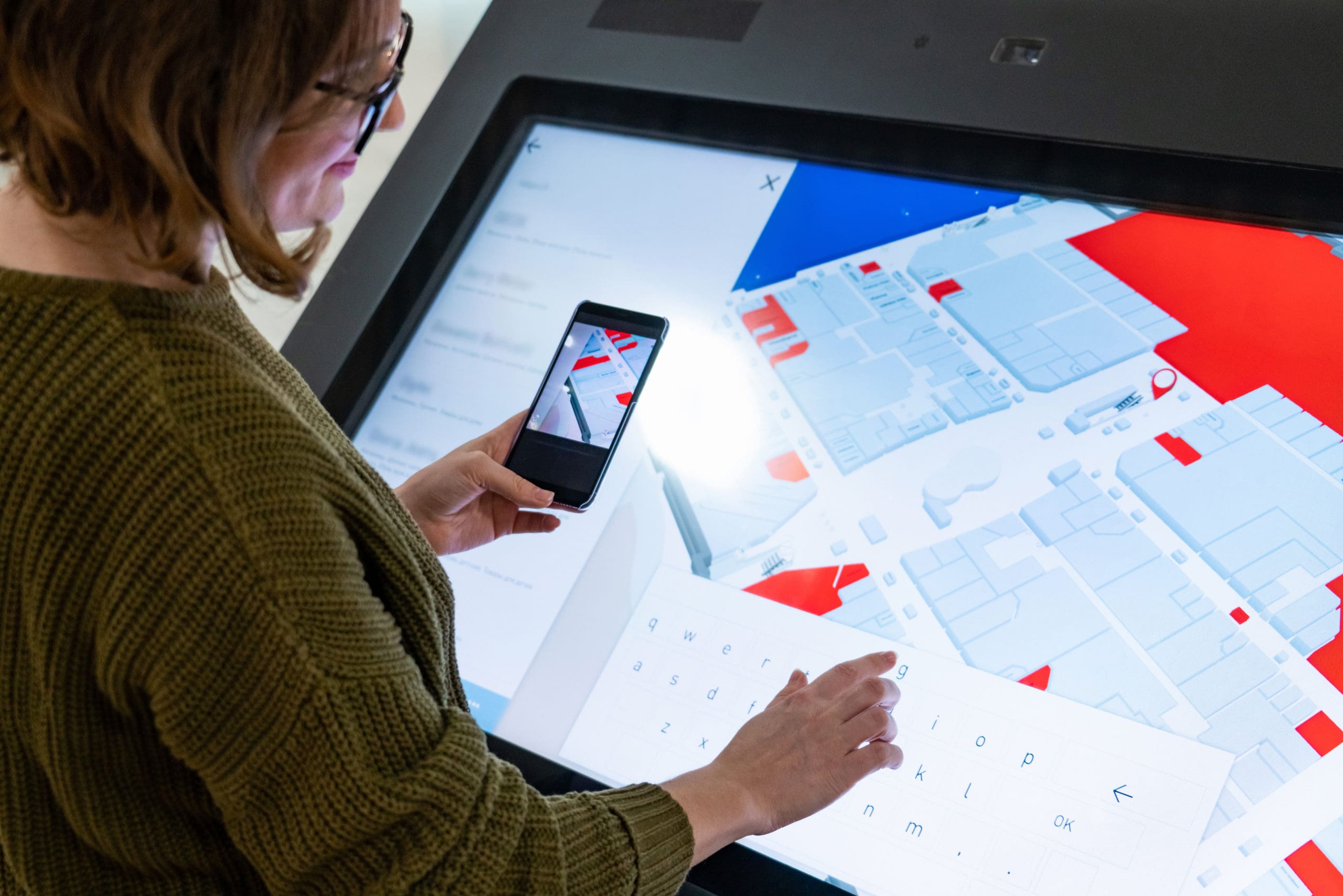We are in the midst of a pandemic which means personal hygiene and sanitation awareness is at an all-time high. In an effort to keep safe from the novel coronavirus, COVID-19, people are staying home as much as possible and constantly cleaning.
Being stuck indoors means we’re using our smartphones, computers, tablets and home controls more than ever. These devices may bring us convenience, but they all have one thing in common: touch screens.
Touch screens aren’t just limited to the home, they are found everywhere, whether it be at an ATM, registration kiosks, checkout counters or various spots in the office.
Because they are “high-touch” surfaces, it is important to keep them clean. However, there is a difference between just cleaning your touch screen and disinfecting it.
Cleaning removes dirt, germs and impurities, while disinfecting utilizes chemicals to kill germs and reduce/eliminate the chance of infection — very important to keep in mind as we try to move past COVID-19.
When it comes to protecting against COVID-19 at home, the U.S. Centers for Disease Control (CDC) states, “diluted housed bleach solutions, alcohol solutions with at least 70% alcohol and most common EPA-registered household disinfectants should be effective.”
However, not all these solutions are ideal for touch screens. TRU-Vu Monitors, a leading supplier of LCD displays, has provided guidelines for safely cleaning and disinfecting touch screens following CDC and EPA recommendations. View them below.
How to Properly Clean Touch Screens
- Prepare your touch screen for cleaning by powering down the device, if possible.
- Be sure to not get any liquids inside of the unit. To best avoid doing so, do not directly spray the device. Either use wet wipes, or spray/dampen a cloth and be sure to squeeze any excess moisture off.
- Avoid using abrasive cloths, such as rags or paper towels, as they can spread lint and/or even damage the screen. Instead, use only non-abrasive cloths, such as soft lint-free cloth, in order to avoid scratching the screen.
- Avoid products that may cause discoloration, such as highly concentrated alcohol (>85%), non-diluted bleach or ammonia solutions.
- Wipe the surface of the screen gently in small circles, and then allow it to dry.
- Wash hands and discard the used gloves.
How to Properly Disinfect Touch Screen
- Prepare your touch screen for disinfecting by powering down the device, if possible.
- Dampen a new clean, non-abrasive cloth with a disinfectant recommended by the CDC: a household bleach solution (1/3 cup of bleach per gallon of water) or Isopropyl alcohol (71% to 85% alcohol). Be sure to squeeze any excess liquid off of the cloth. Do not spray the solution directly onto the touch screen.
- Read the manufacturer’s instructions carefully, as many require the surface to remain wet for a few minutes. Continuous wiping may be required.
- Disinfect the surface by wiping it down gently in small circles, and then allow it to dry.
- Wash hands and discard the used gloves.
U.S. EPA-recommended disinfectants safe for touch screens (including registration number):
- Clorox Disinfecting Wipes – Reg. No. 5813-79
- Clorox Healthcare Bleach Germicidal Wipes – Reg. No. 67619-12
- Clorox Commercial Solutions Hydrogen Peroxide Cleaner Disinfectant Wipes – Reg. No. 67619-25
- Lonza Disinfectant Wipes – Reg. No. 6836-313
- Lysol Brand Clean & Fresh Multi-Surface Cleaner (20% cleaner solution to water ratio) – Reg. No. 777-89
- Purell Professional Surface Disinfectant Wipes – Reg. No. 84150-1
- Sani-Cloth Prime Germicidal Disposable Wipes – Reg. No. 9480-12
NOTE: If the CDC-recommended disinfectants are not available, the best alternative is the use of:
- Water and isopropyl alcohol (up to 85% alcohol)
- Apply the solution to a soft cleaning cloth; do not spray directly onto the touch screen. Wear gloves during the cleaning process. Discard both the gloves and the cleaning cloth following the cleaning process.
Do NOT use the following materials when cleaning/disinfecting your touch screen:
- Isopropyl Alcohol at concentration > 85%
- Methyl Alcohol or Ethyl Alcohol at concentration > 35%
- Thinner or benzine
- Strong alkali lyes
- Strong solvents
- Acids
- Detergents with fluoride
- Detergents with ammonia at concentration > 1.6%
- Abrasive cleaners
- Detergents with abrasives
- Formula 409
- Steel wool
- Sponges with abrasives
- Steel blades
- Cloth with steel threads
This article originally appeared in CS sister publication, Security Sales & Integration. Steve Karantzoulidis is SSI’s web/senior editor.













